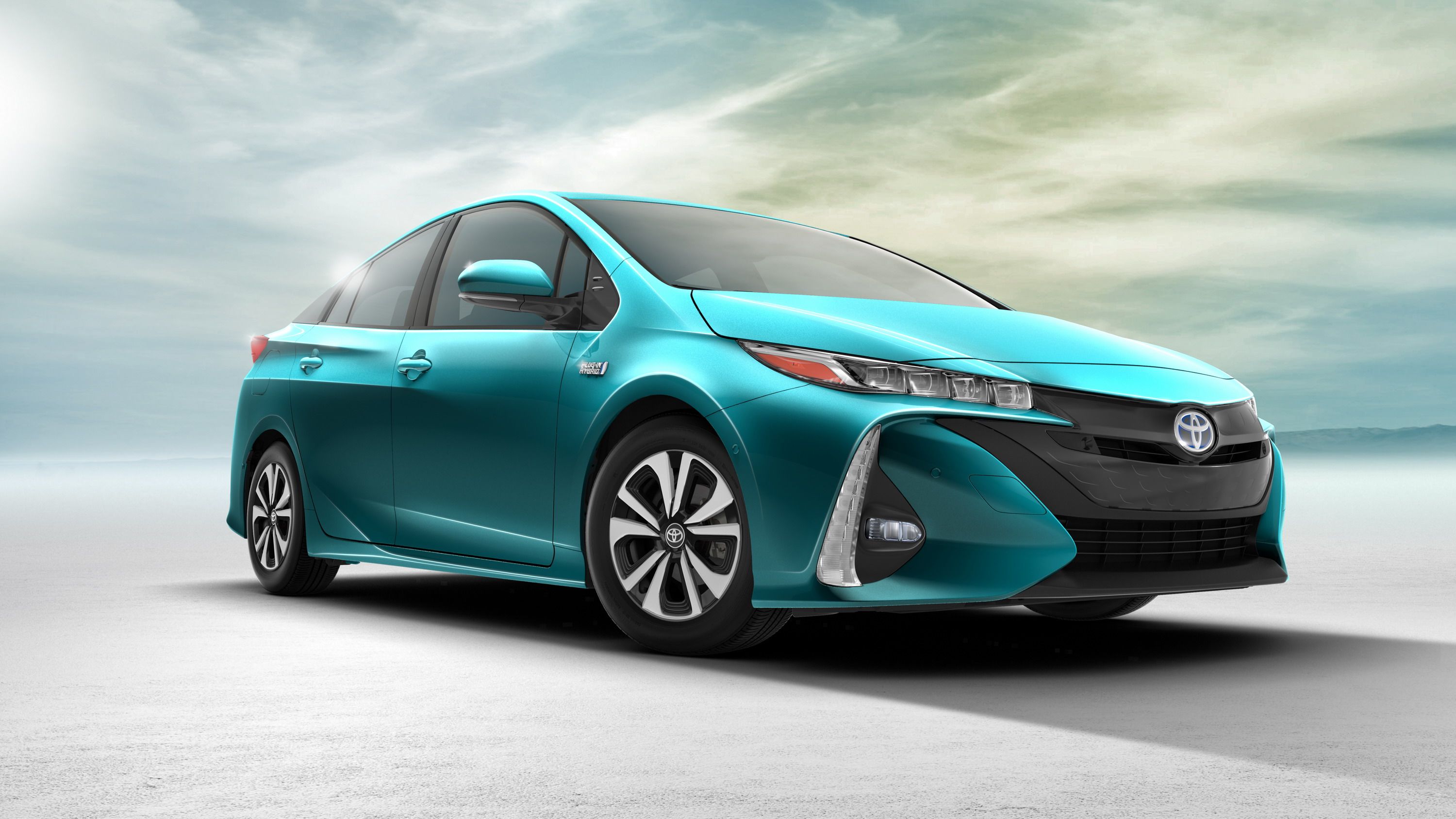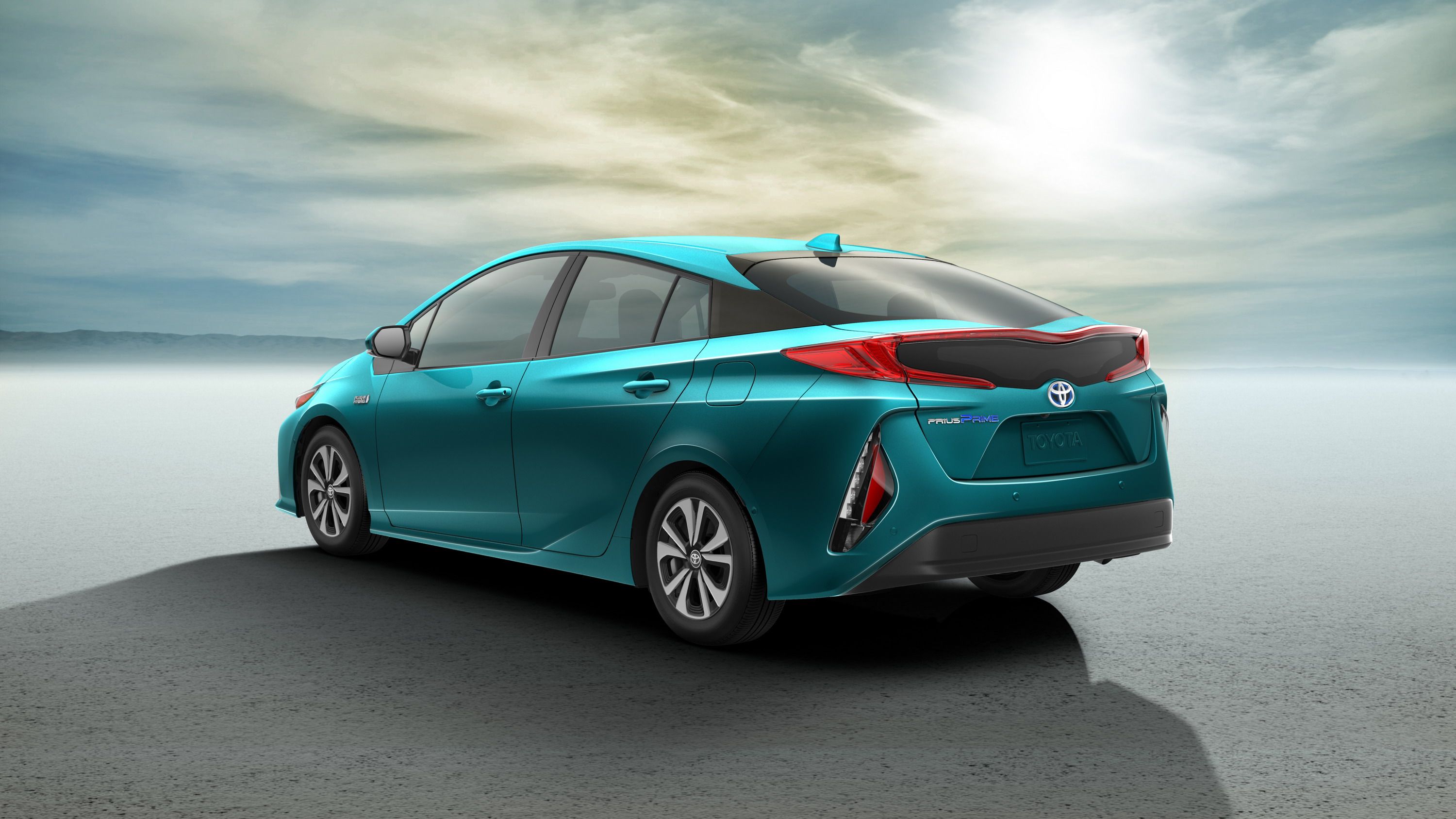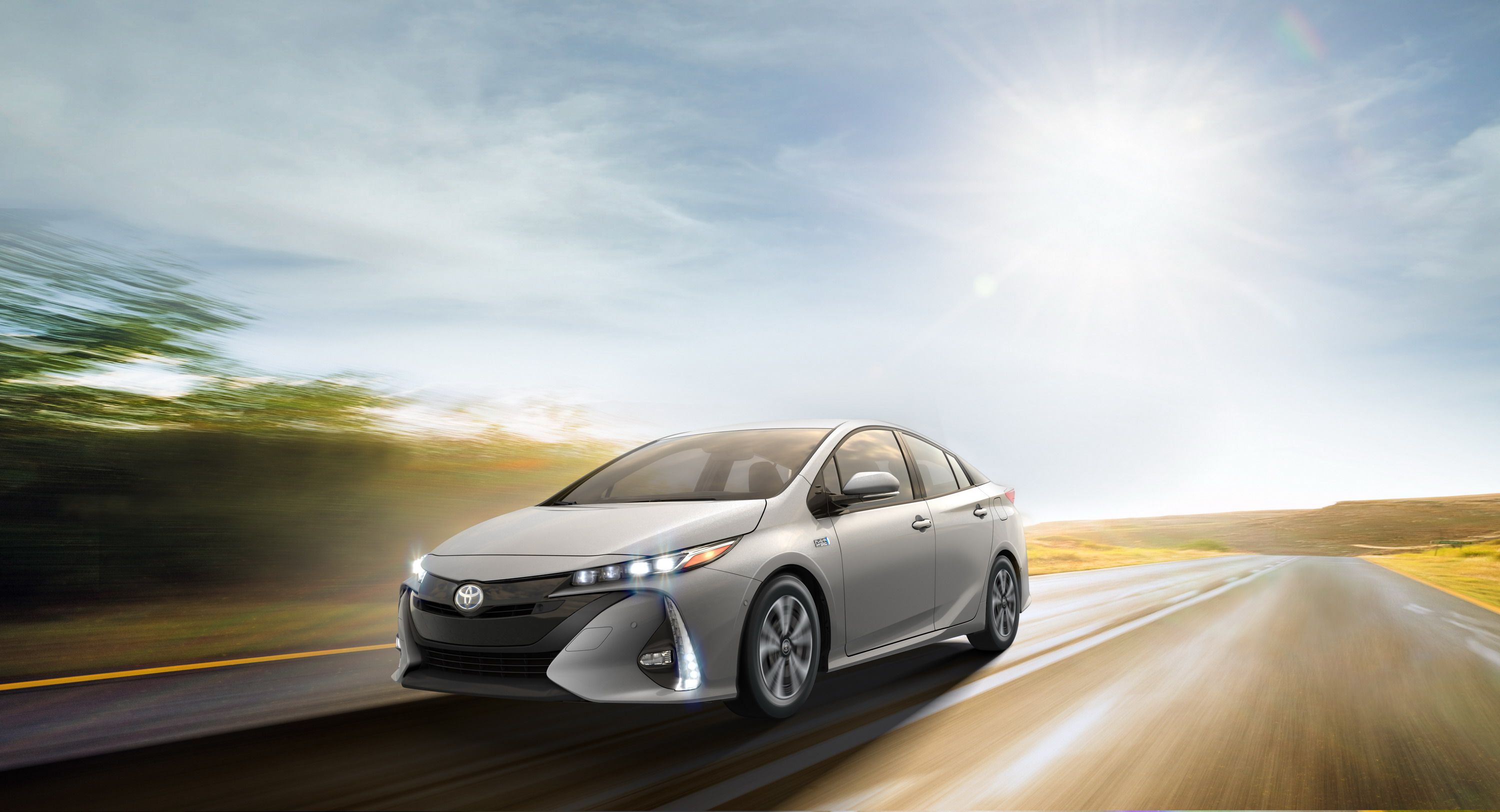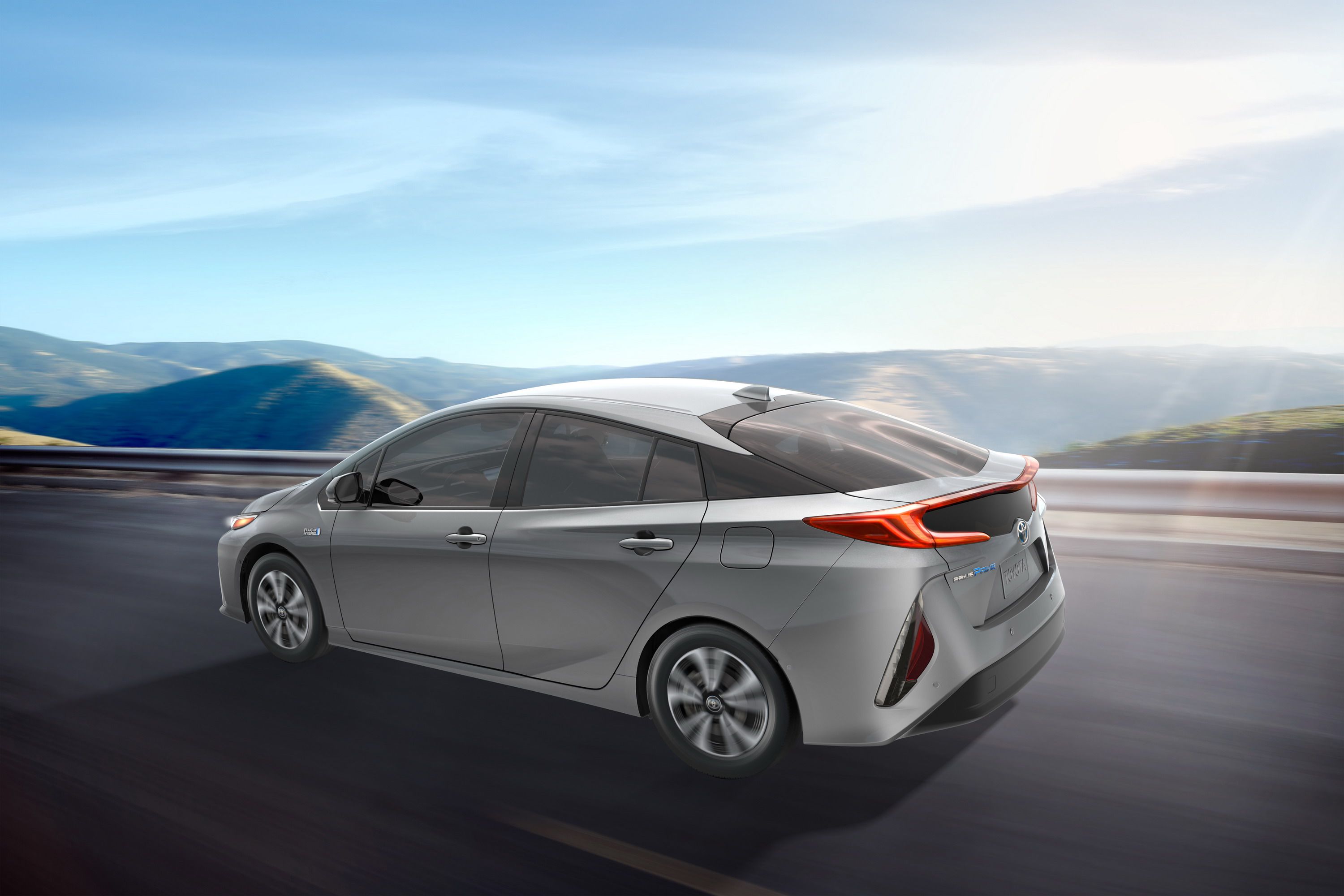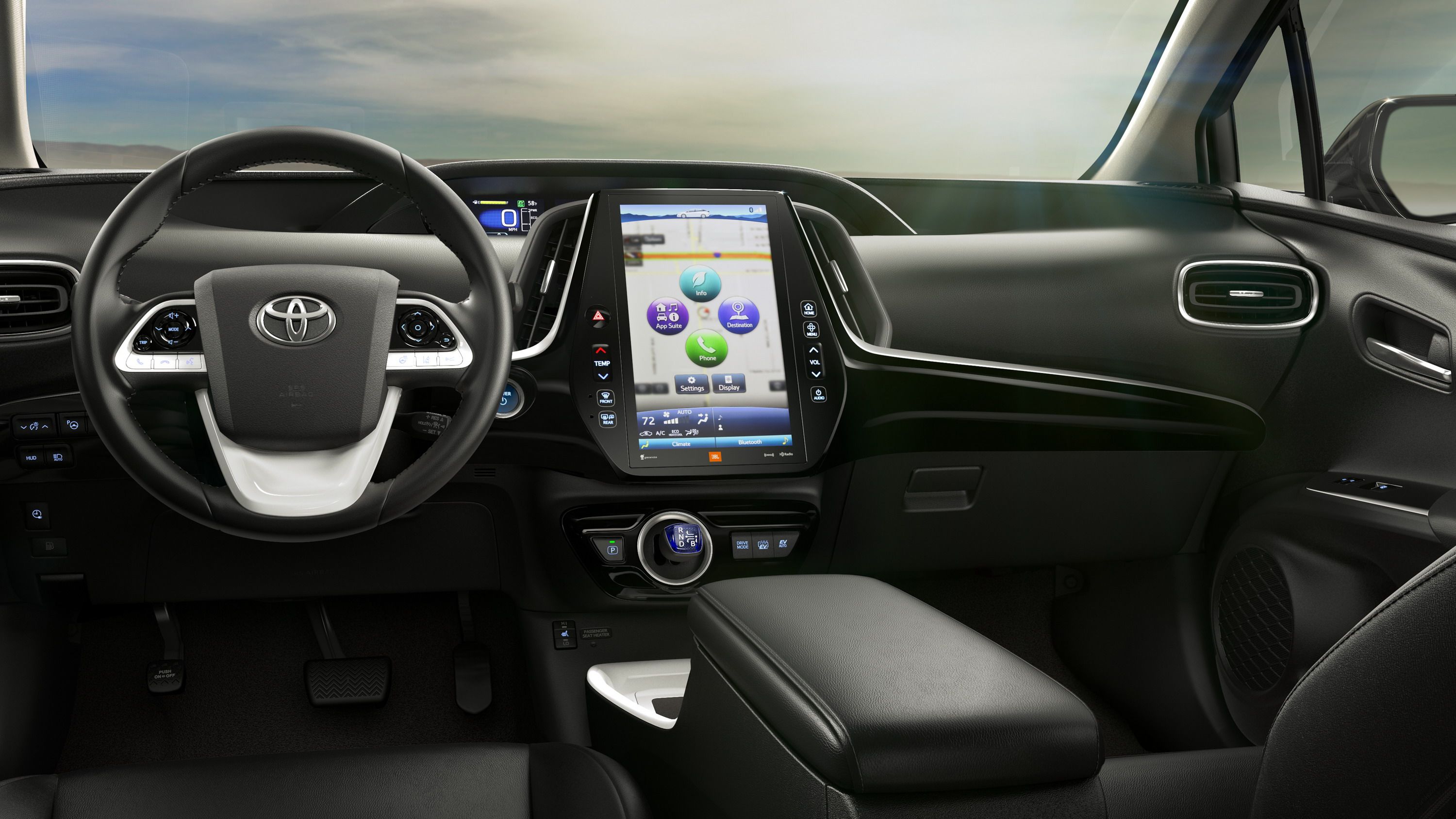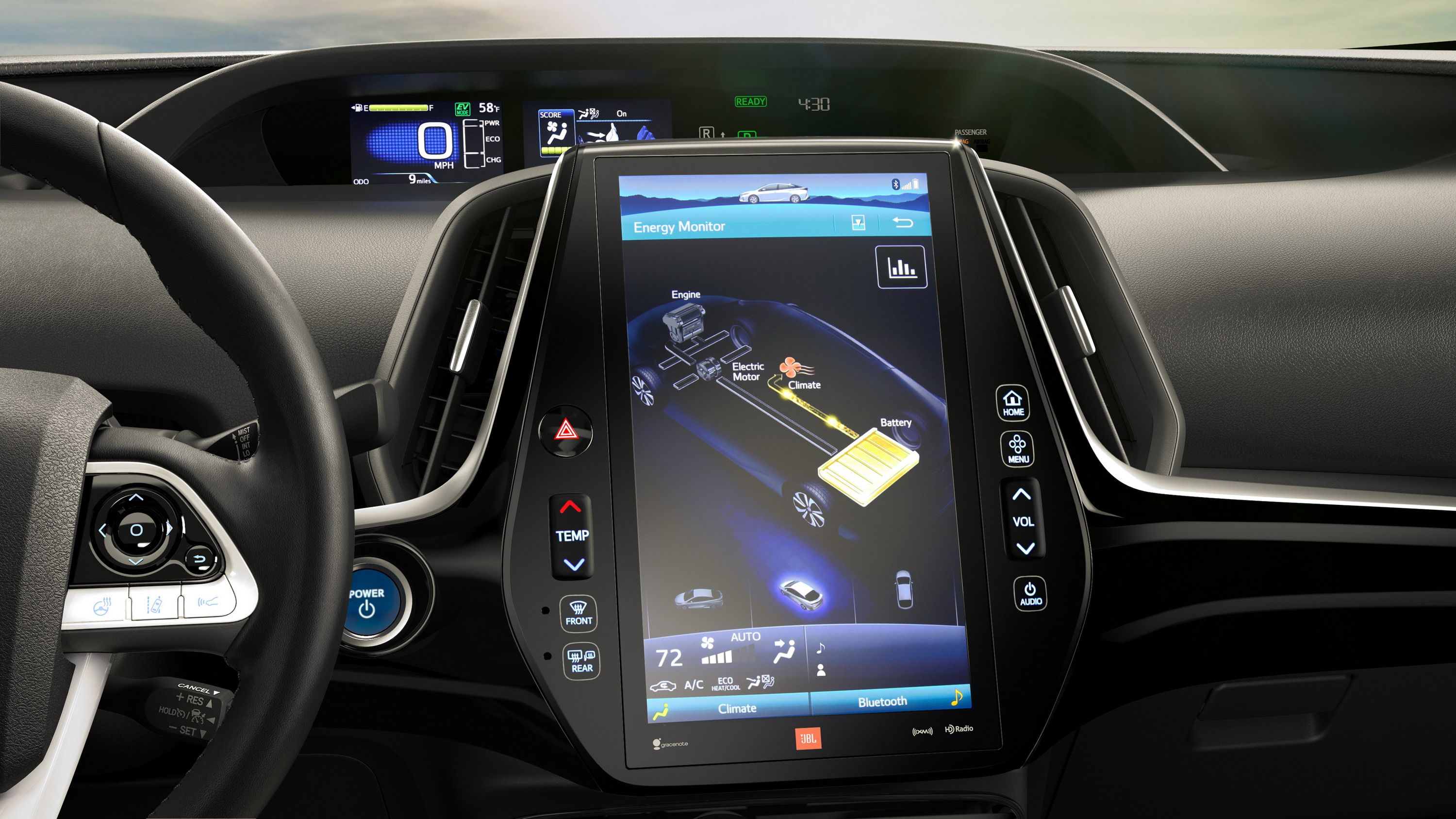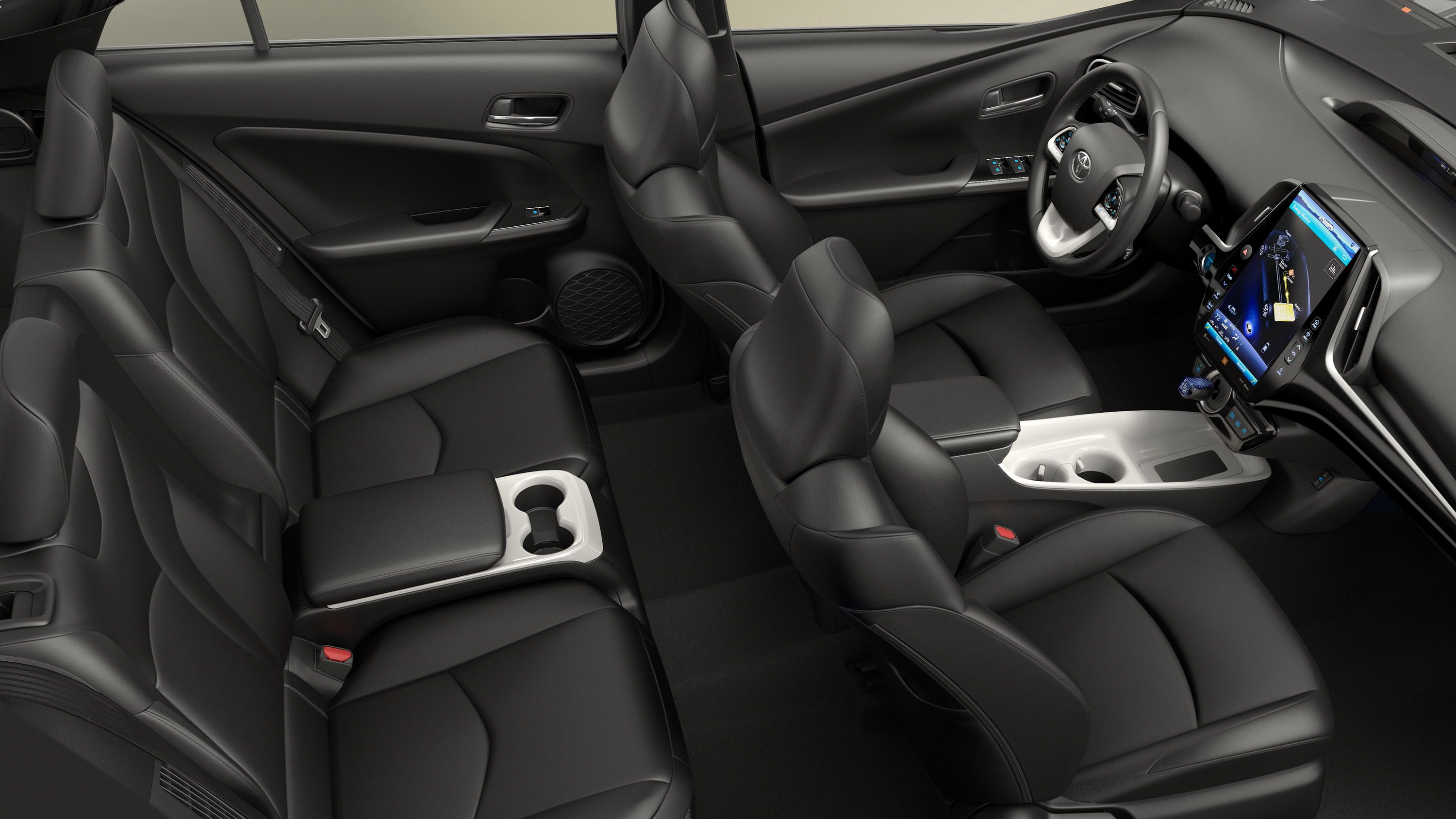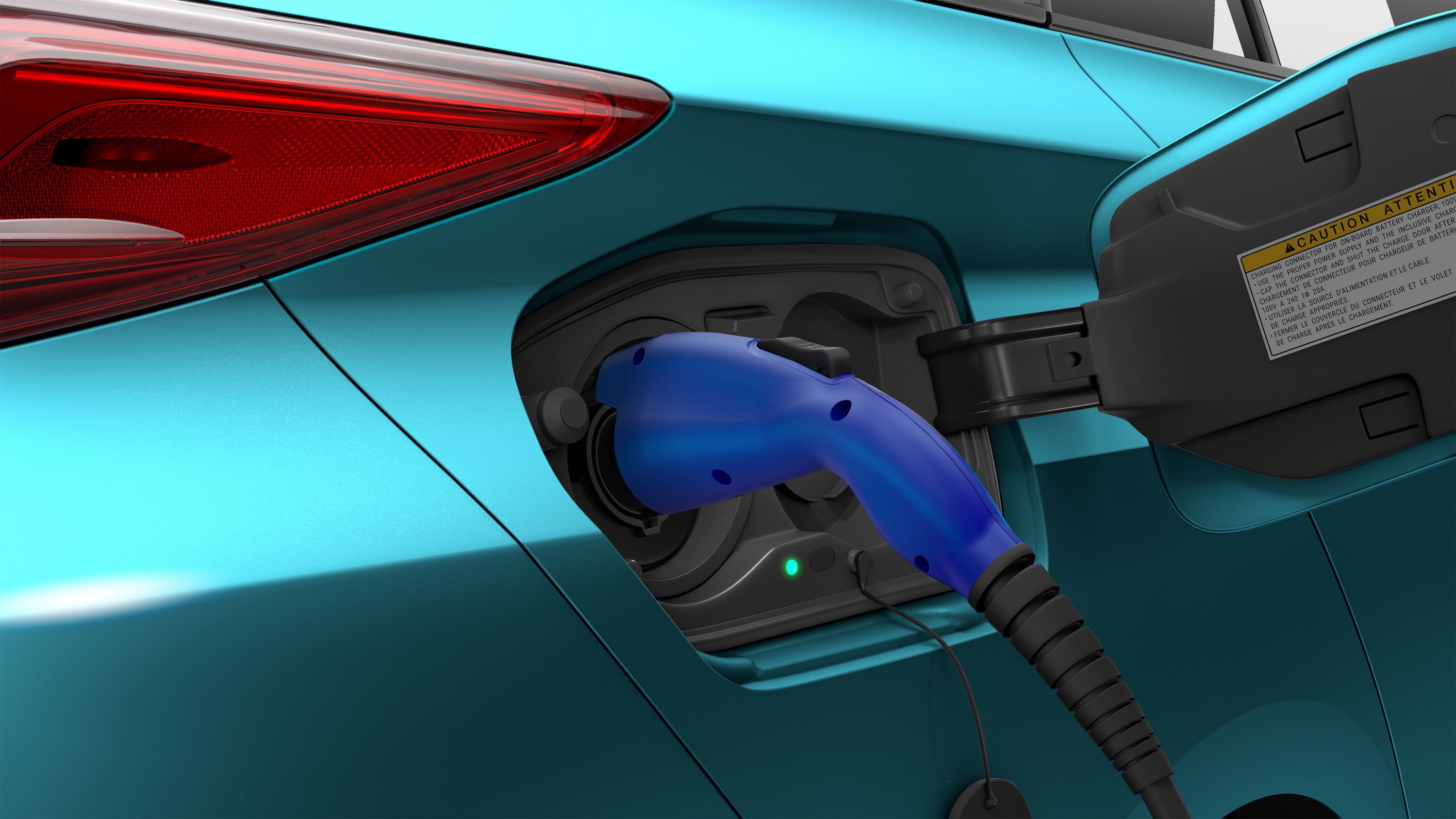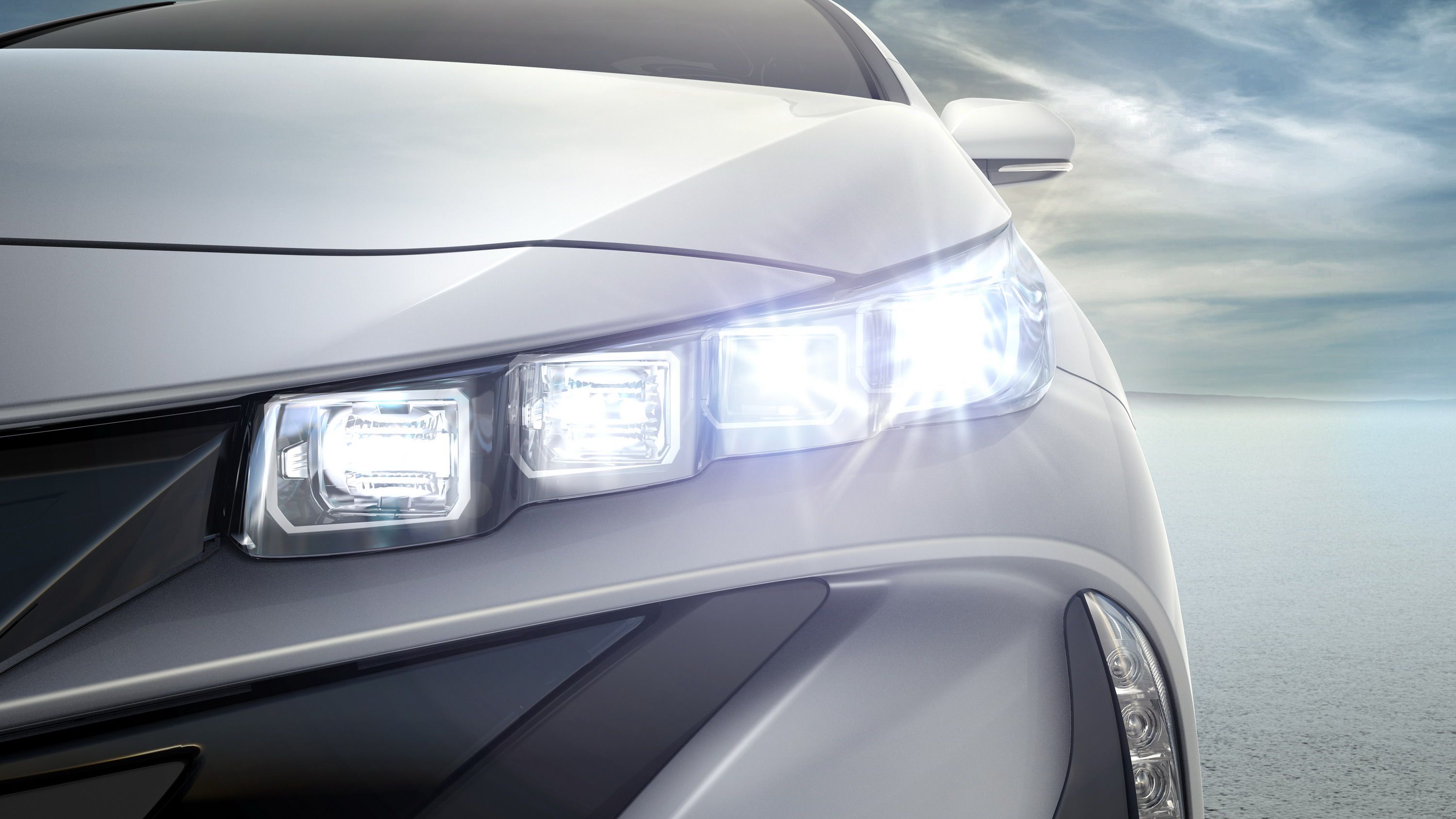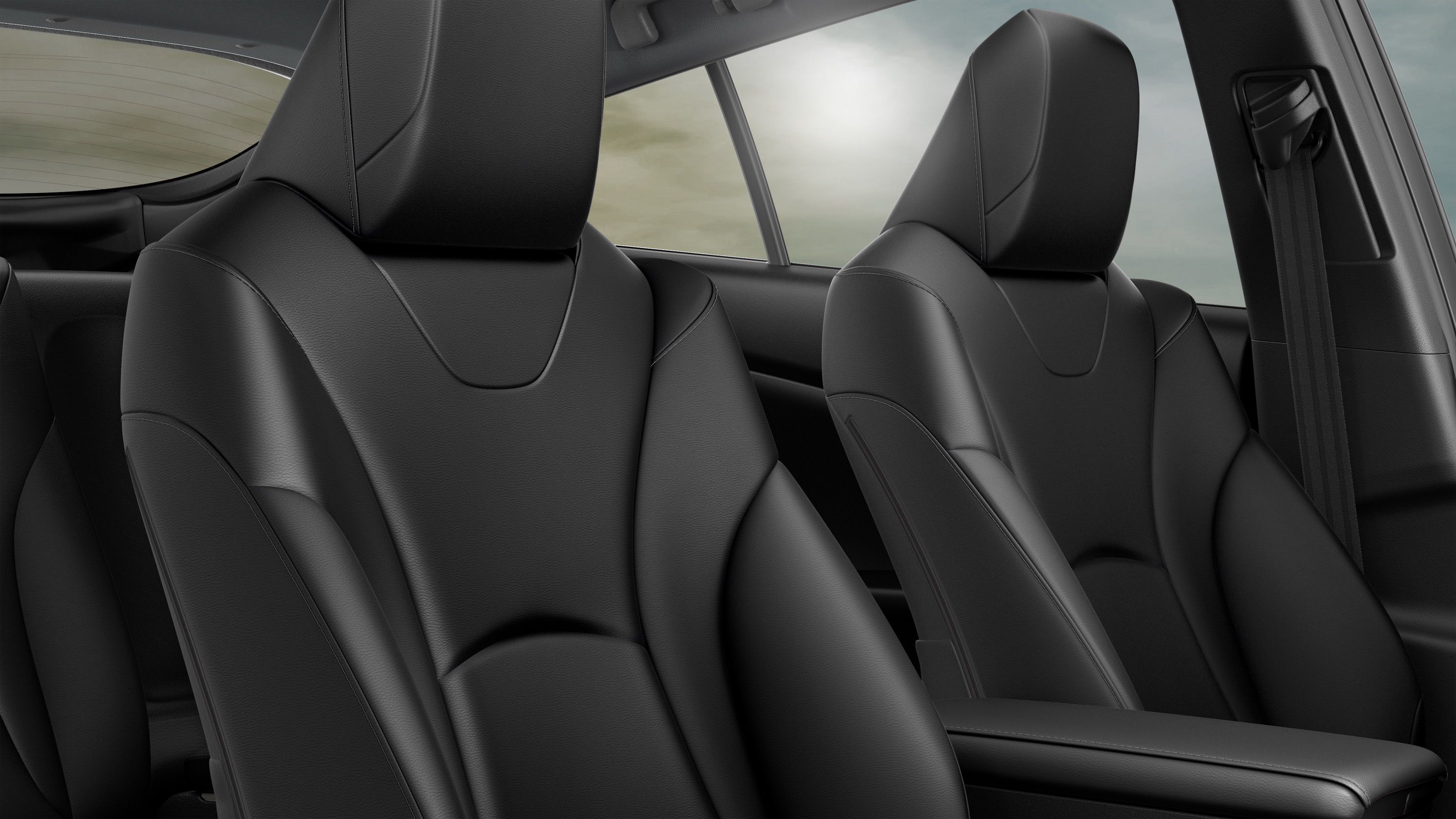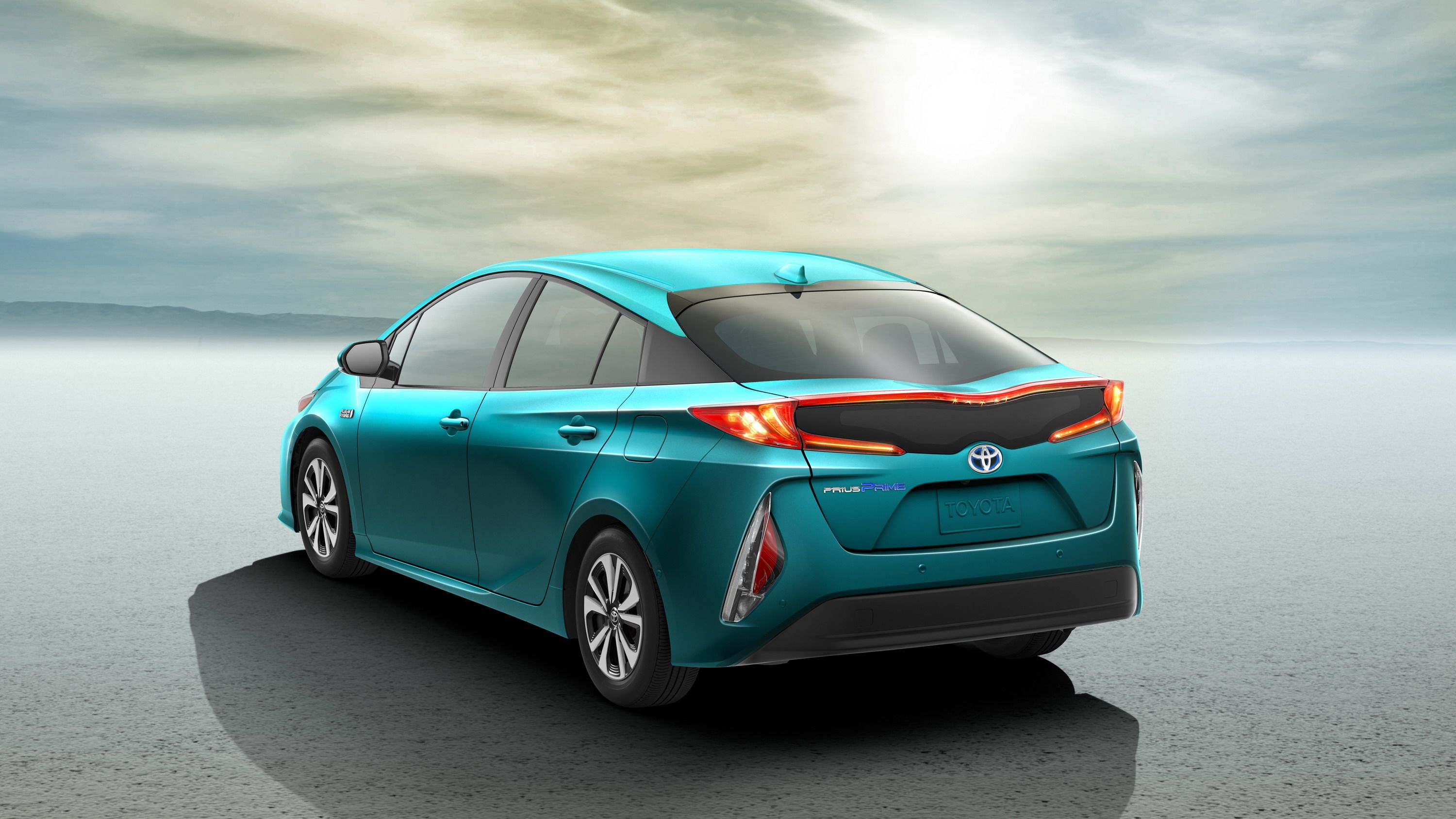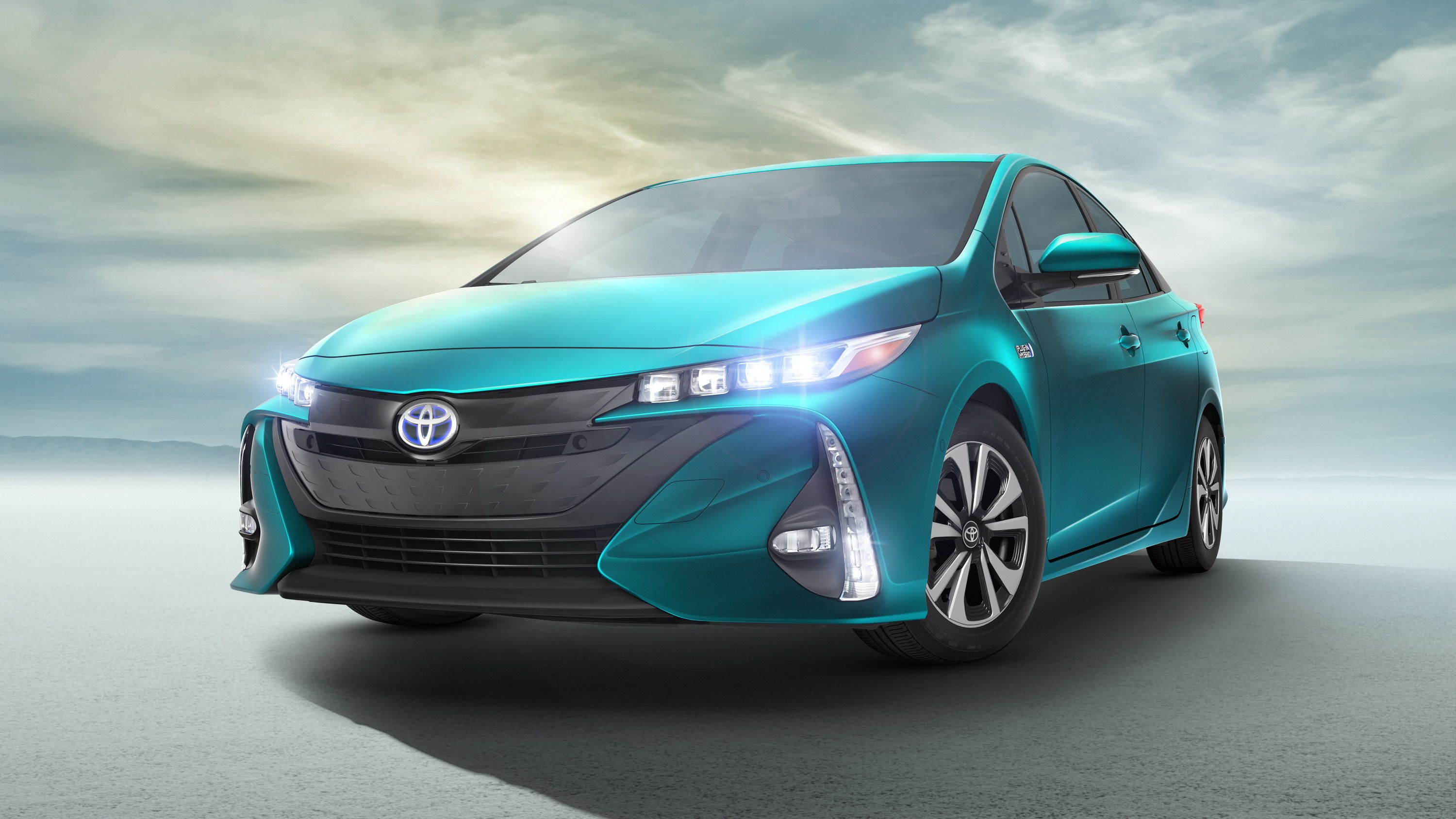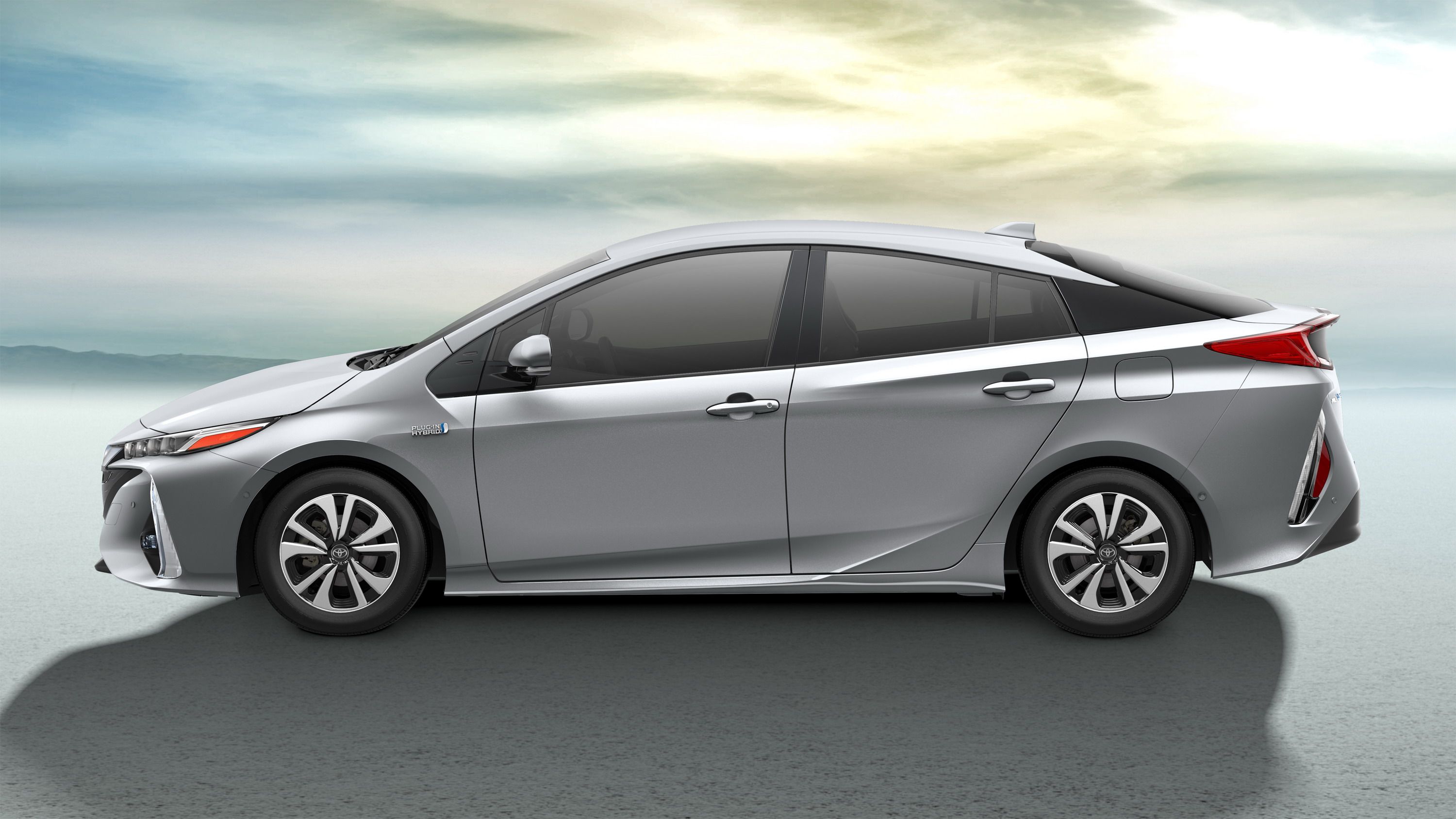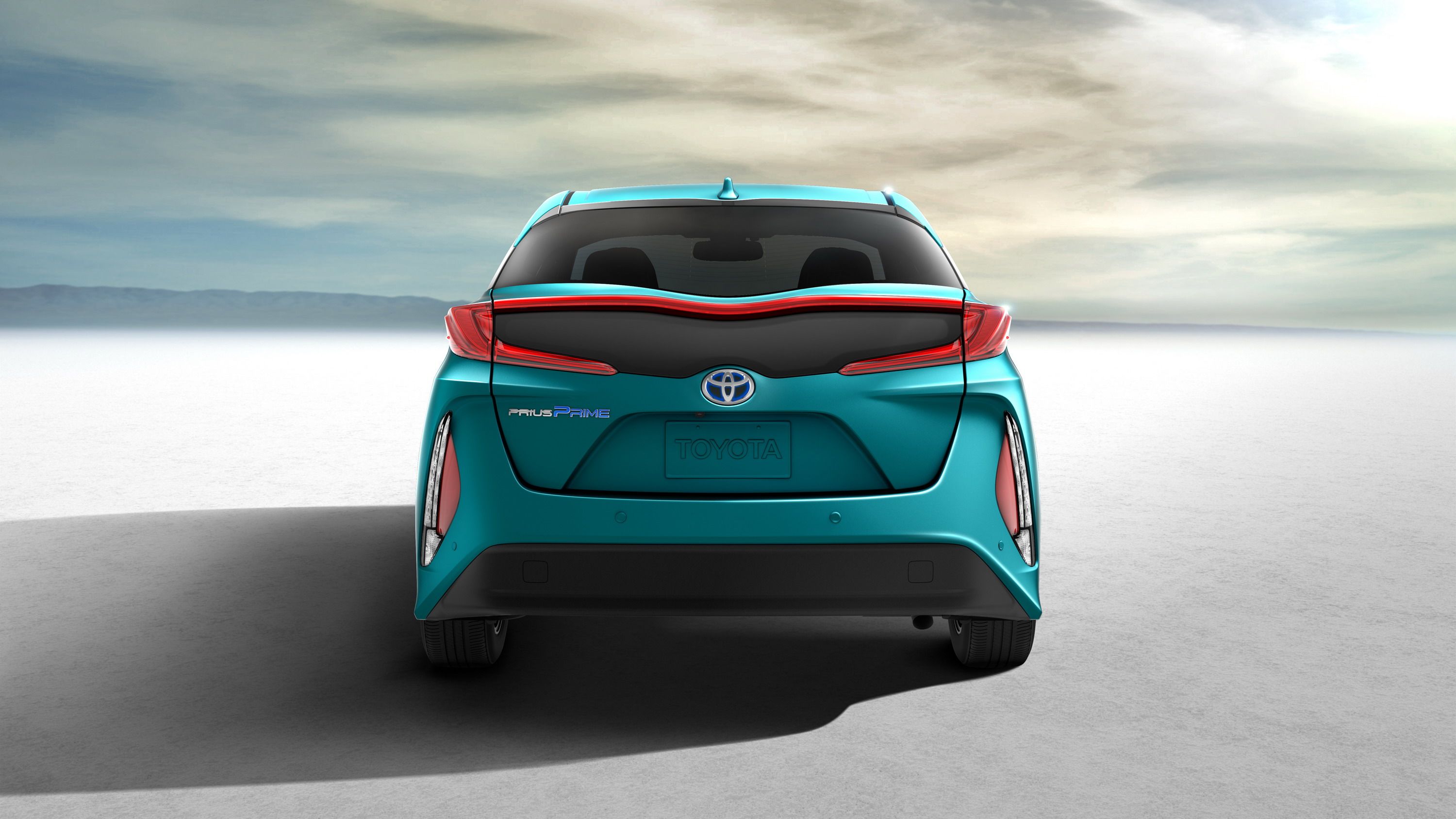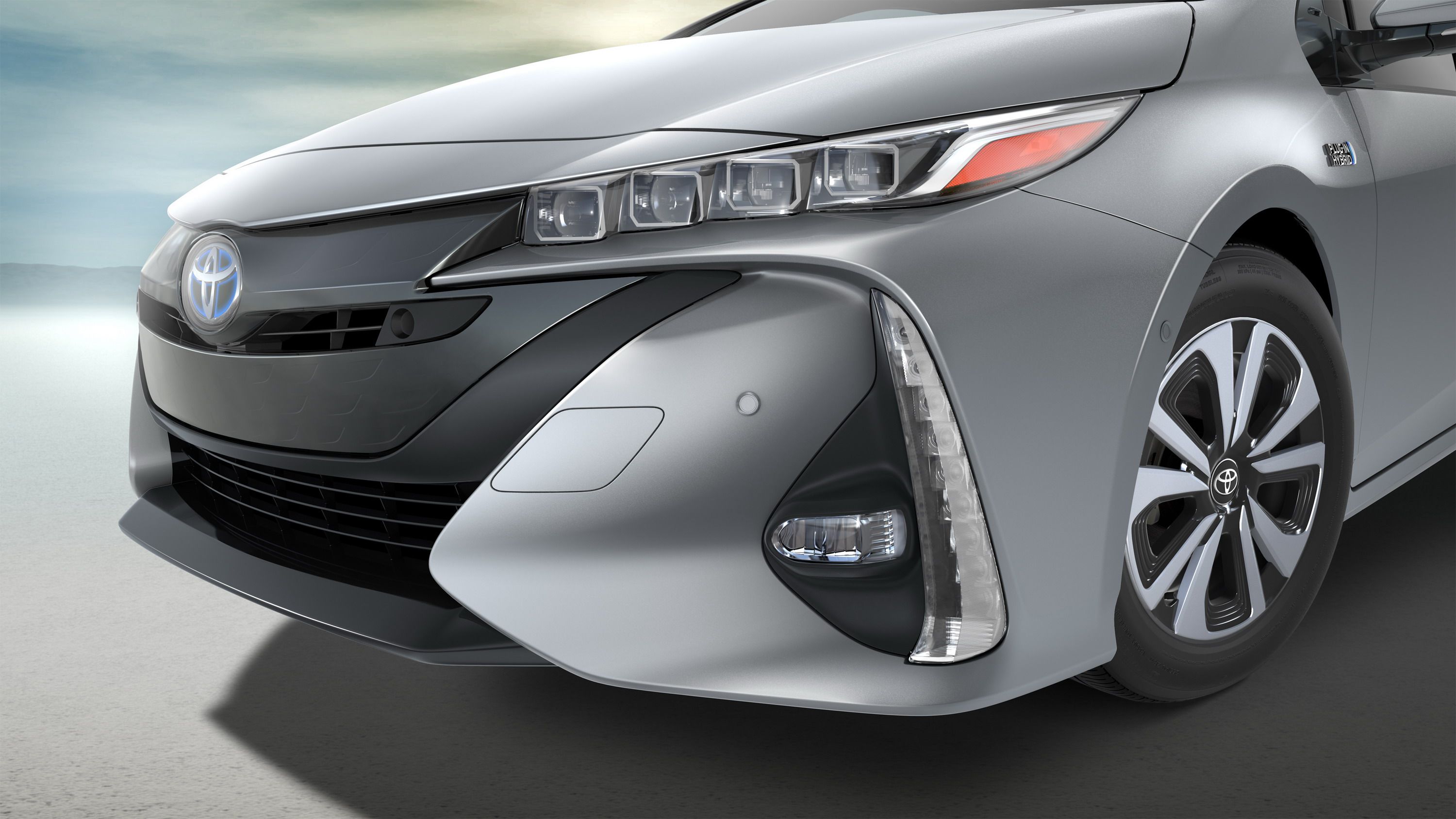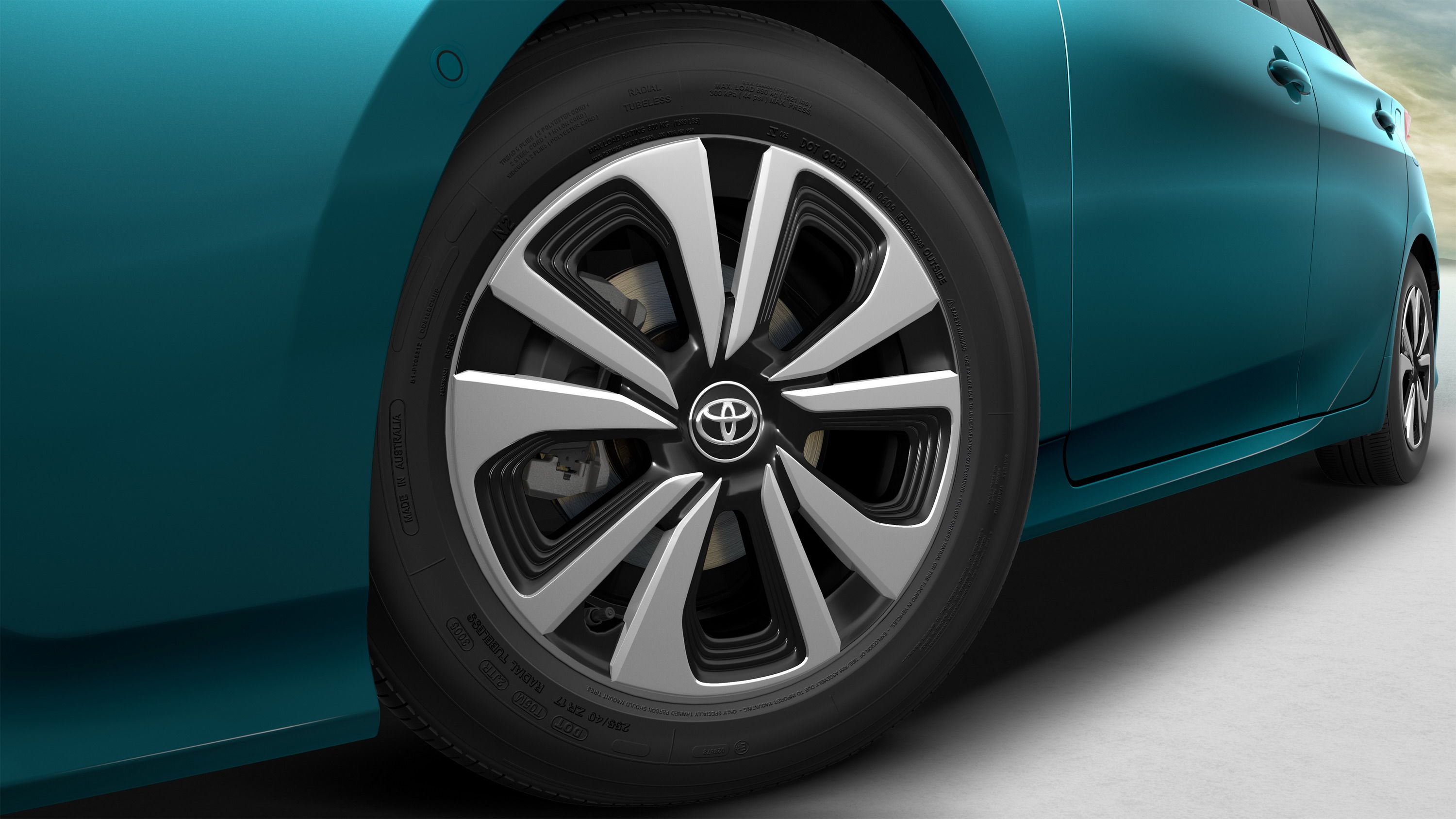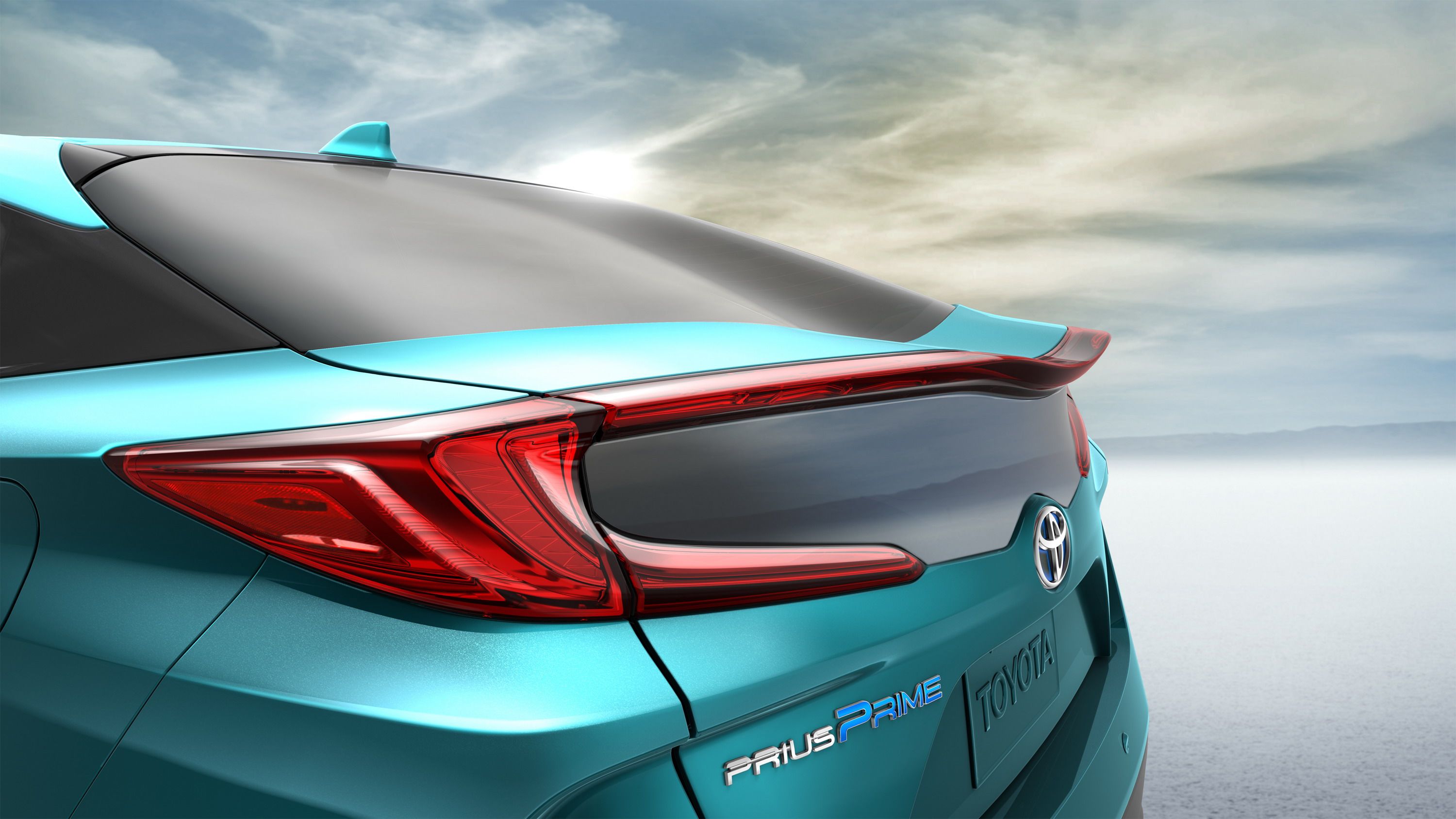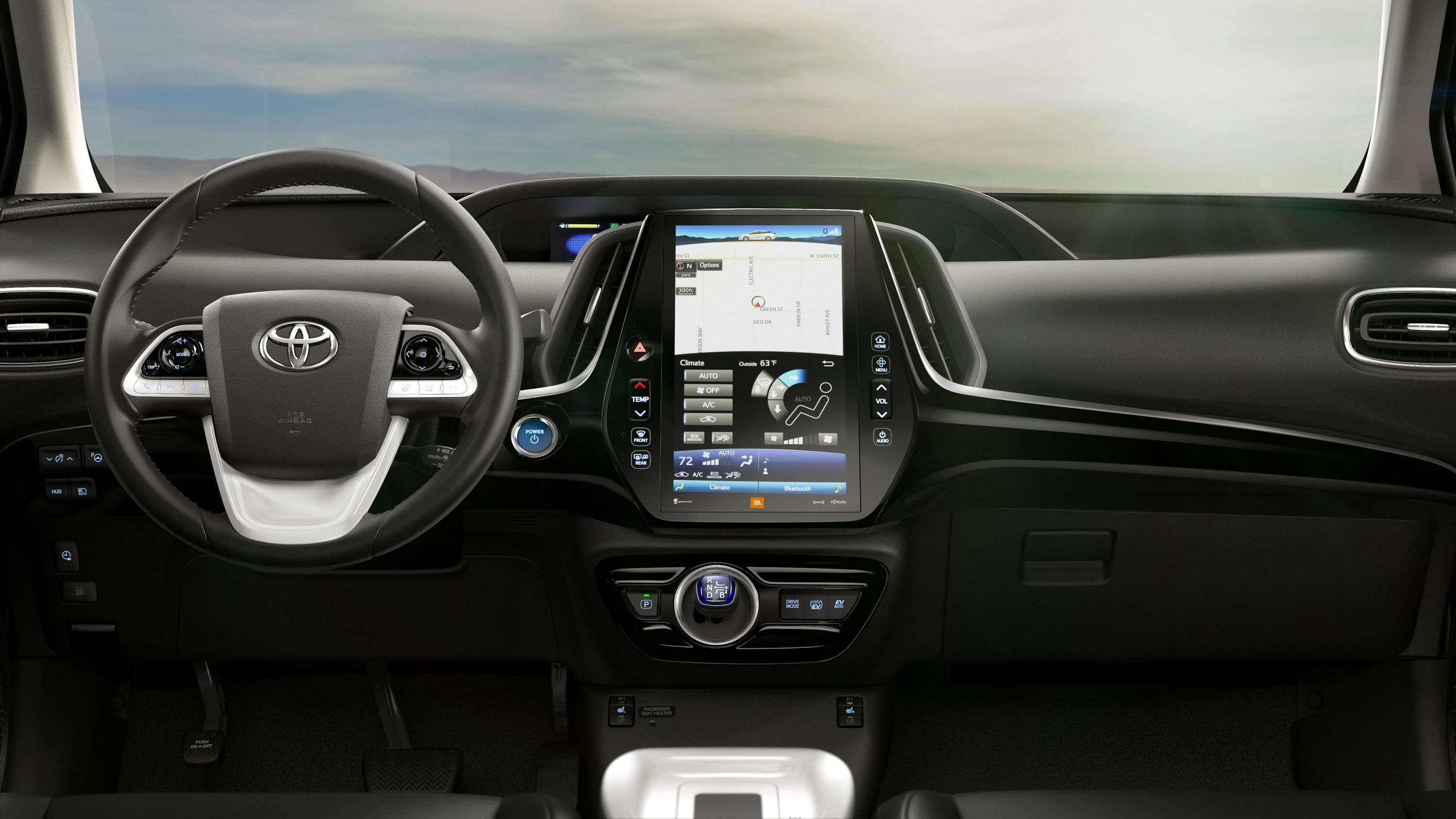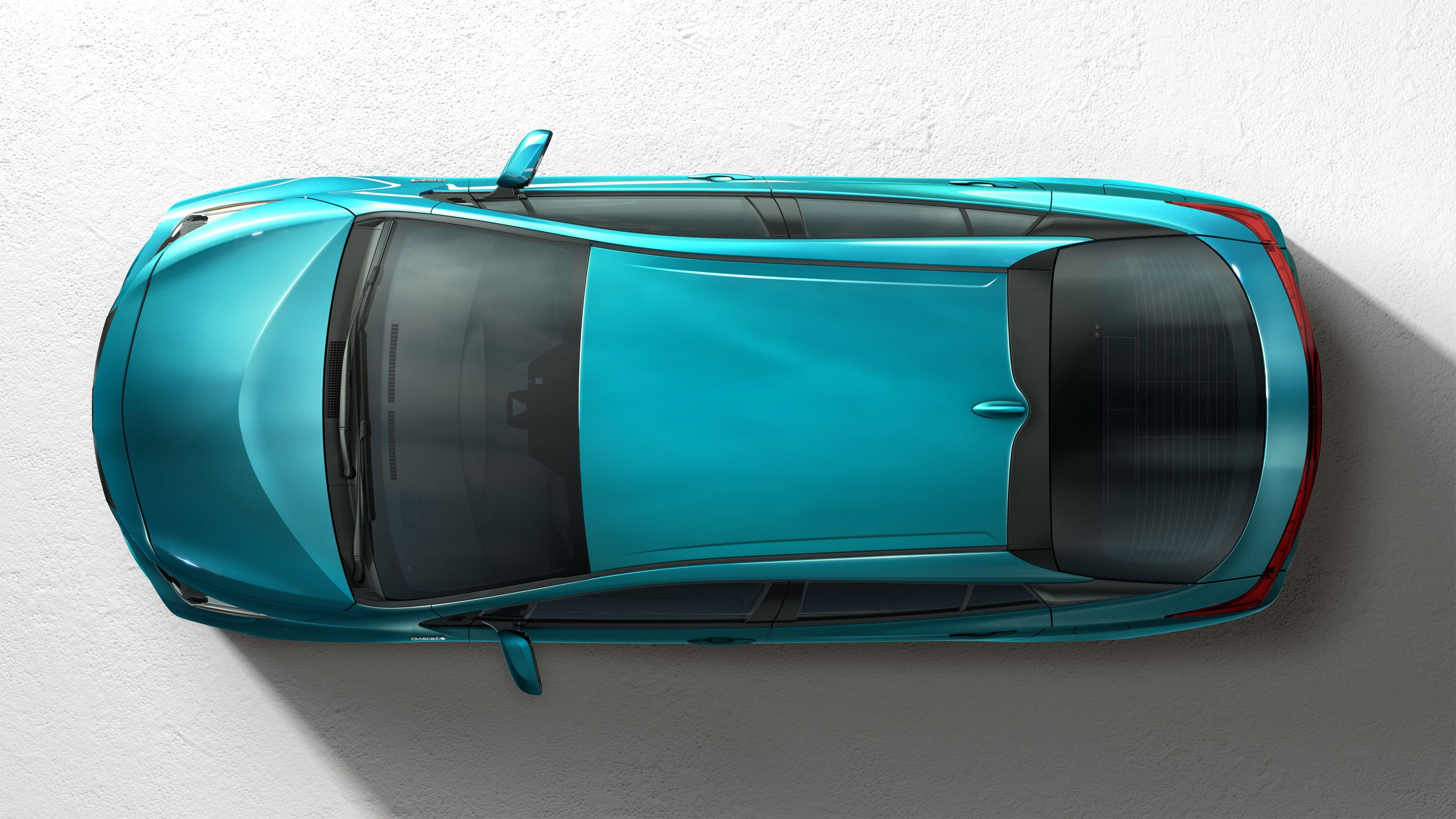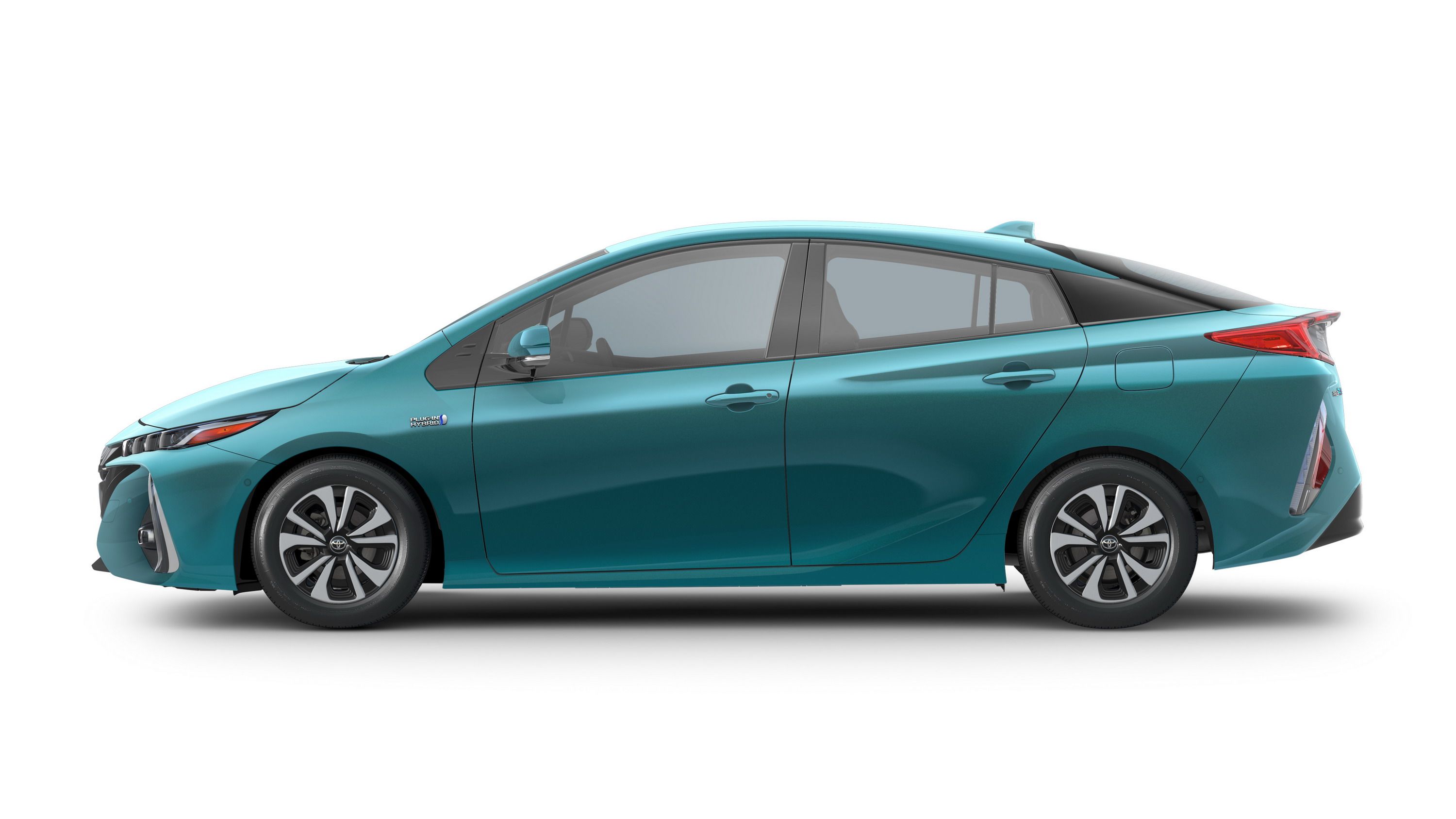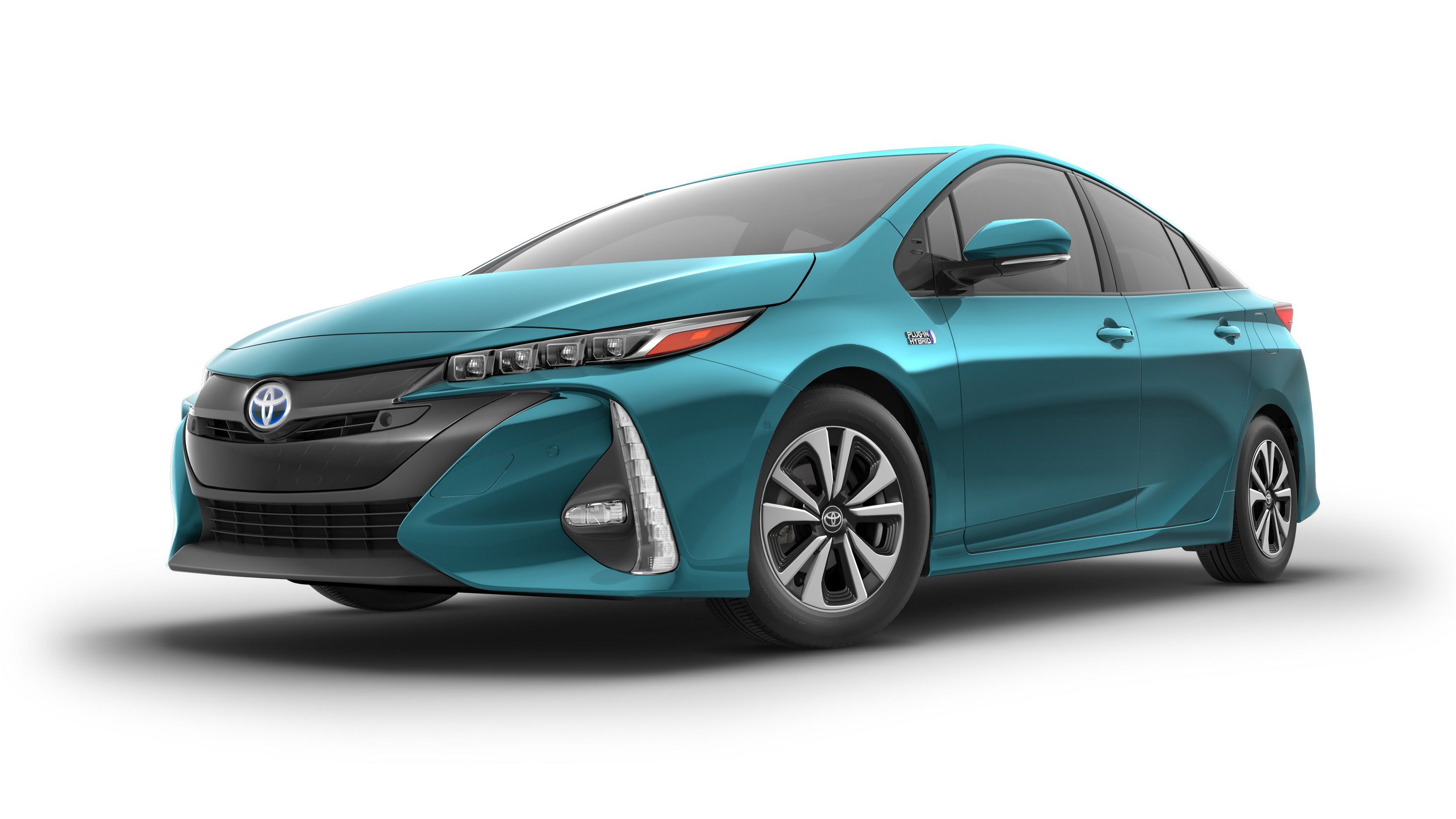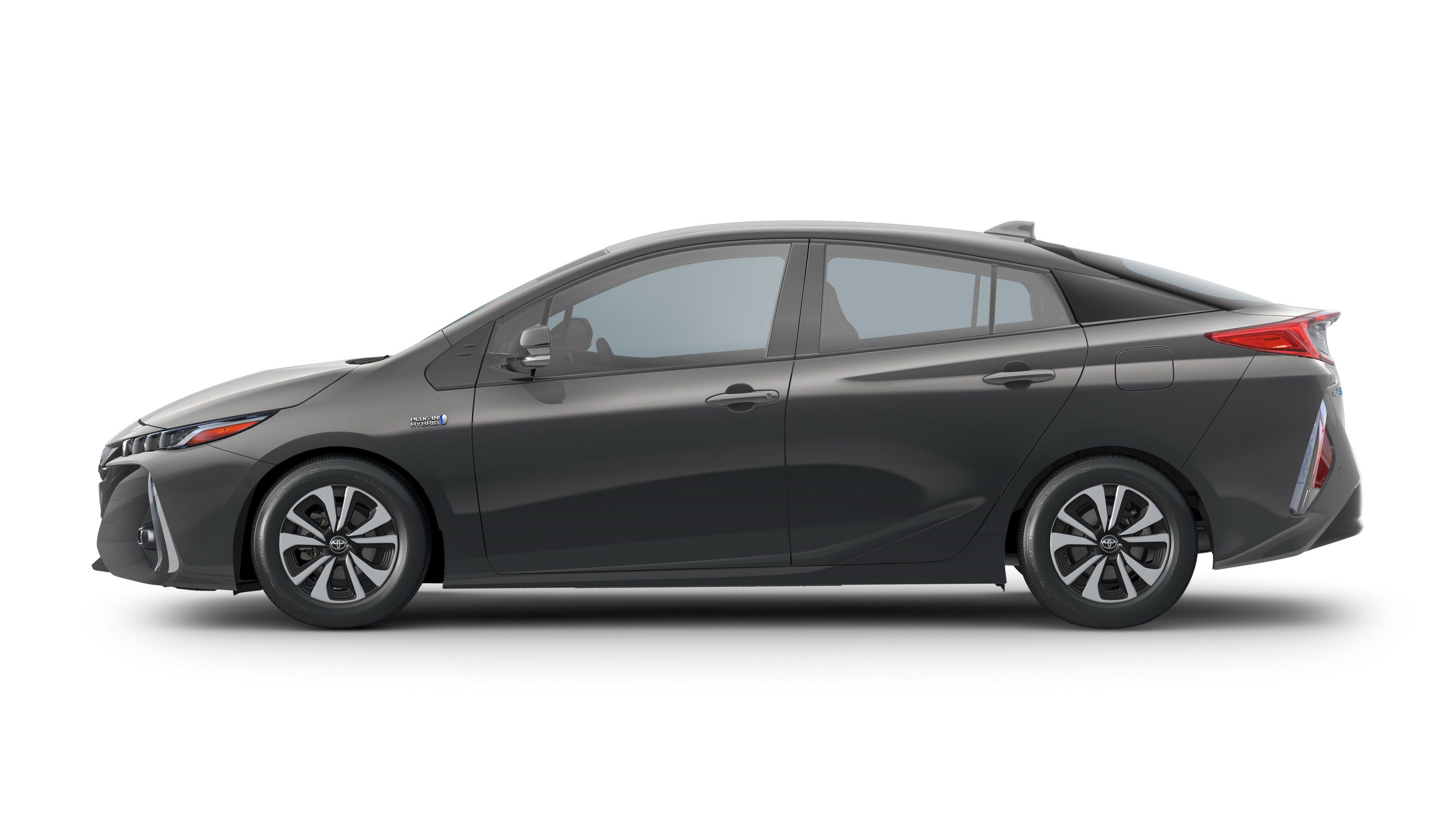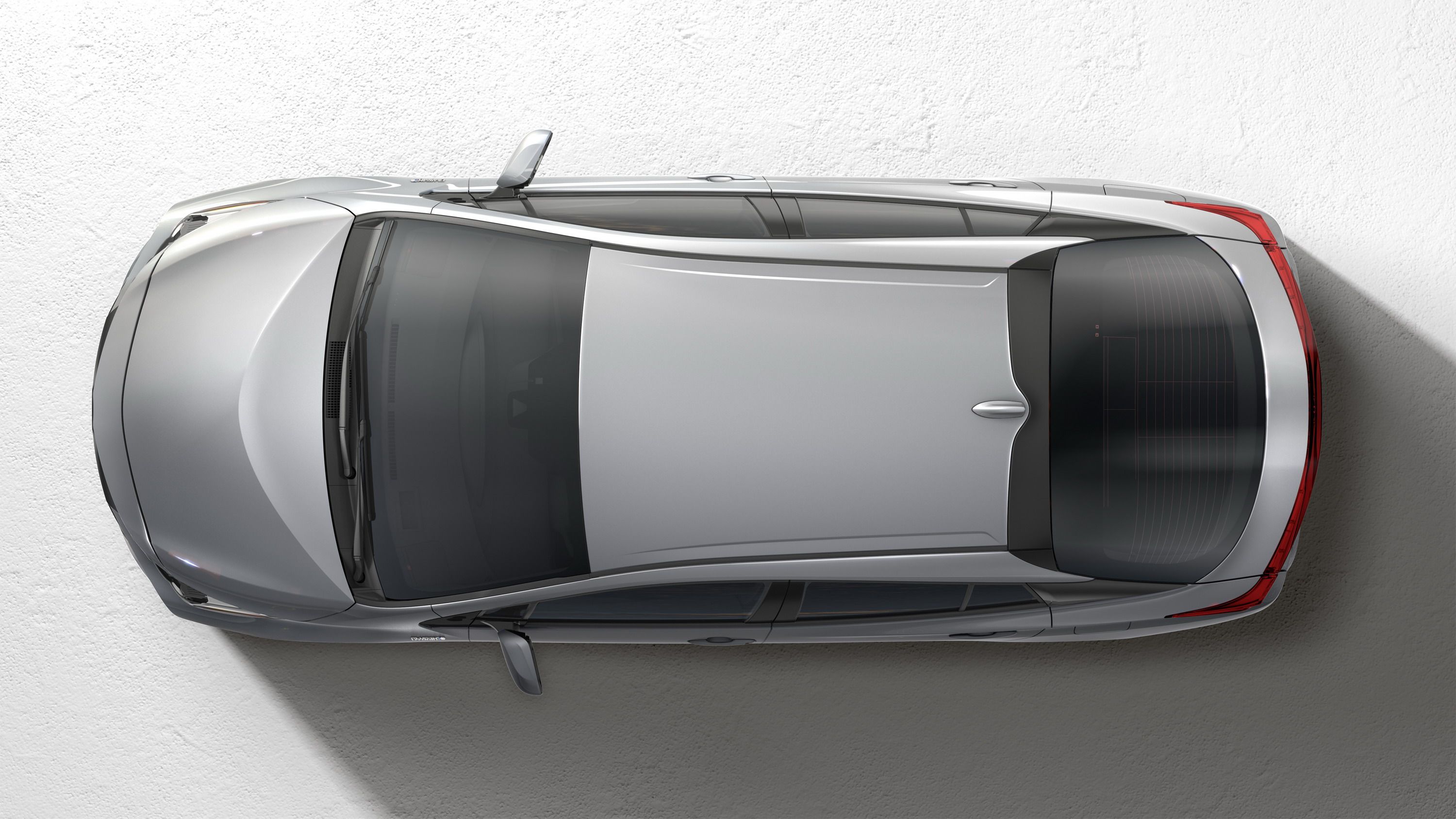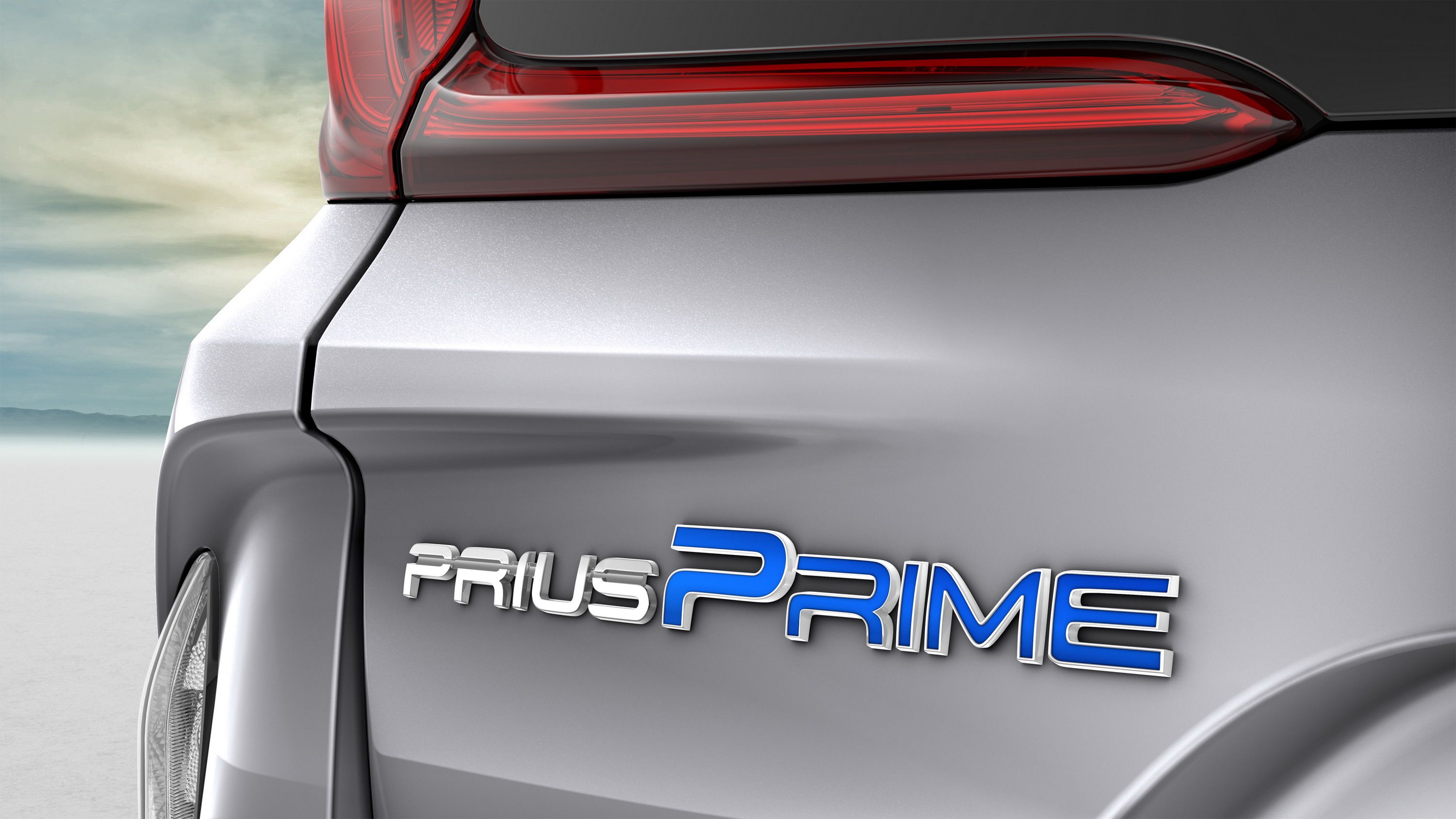With more than 30 gas-electric models on the market, including the Prius->ke231 (aka the first-ever mass-produced hybrid->ke147 vehicle), Toyota->ke88 is justified when it claims to be the “world’s hybrid leader.” But in order to maintain its battery-assisted superiority, the Japanese automaker must continually produce the bleeding edge of green technology->ke1701 and set the trend when it comes eco-oriented transportation. These days, that means the inclusion of a plug-in model. The previous Prius plug-in->ke4486 ended production in June of 2015, but now, it’s back, offering more MPGe, more standard features, and a new look, making for what Toyota calls “one of the most technologically advanced, best-equipped Prius in the model’s history.”
It’s called the Prime, and first things first – it offers upwards of 120 MPGe, which, according to the manufacturer, is expected to be the highest MPGe of any plug-in hybrid on the market. That in itself is a significant statement in the world of max-miler passenger vehicles, but this frugal fuel consumption is also backed by more all-electric range, with up to 22 miles of emission-free driving off battery power alone, effectively double the EV range of the previous model.
So then – the Prime sounds like it’s got the goods, but with gas prices remaining so low, is it enough to spark the interest of consumers?
Continue reading to learn more about the 2017 Toyota Prius Prime.
2017 Toyota Prius Prime
- Make: Array
- Model: 2017 Toyota Prius Prime
- [do not use] Vehicle Model: Array
Exterior
For better or worse, one look at the Prime is all you need to determine that it is indeed a Prius. The aesthetic was undoubtedly guided by the principals of minimal air resistance, a characteristic that’s assisted by an automatic grille shutter in the nose. However, Toyota says “the Prius Prime is no aero jellybean,” and if you look closely, there’s a little superfluous styling thrown in here and there.
The most noticeable visual changes are in the front fascia, where horizontal quad LED headlights are matched to vertical daytime running lights. You’ll also find LEDs in the wing-shaped taillights, which are once again matched with vertical lights in the corners. Toyota says the LEDs offer superior illumination while simultaneously reducing energy consumption compared to traditional halogen lights.
In profile, strong character lines give the car a raked appearance, which is emphasized by a rather bulbous rear end. Highly angular cuts and deep recesses are found everywhere, a staple of Toyota’s most recognizable eco-warrior.
All told, it’s an extremely polarizing look, one that’s sure to draw praise from the eco-faithful and aversion from the non-believers. But that’s the Prius way, and you gotta at least give Toyota credit for sticking to its guns.
Dimensionally, the Prime is larger than the previous plug-in, with an extra 2.4 inches of length and 0.6 inches of width. It’s also about an inch lower.
Interior
Inside, the Prime uses the same sort of spacey, futuristic design we’ve come to expect from a member of the Prius family. The first thing you’ll notice is the enormous 11.6-inch infotainment screen mounted to the center console. Above this, you’ll find dual 4.2-inch color TFT multi-information displays for critical info like road speed, while the drive mode selector (reverse, neutral, park, etc.) is below.
There’s seating for four, while the increased exterior dimensions offer extra cargo space, complemented by a 60/40 rear bench split. There’s also sound-insulated laminated glass for the windshield and front doors. However, when I drove the 2016 Prius last year, it was still a little too noisy for my taste, so hopefully the Prime is an improvement.
As far as equipment goes, there are a ton of extras in the cabin. Standard features include navigation, a rear backup camera, heated front seats, and intelligent automatic climate control. Smartphone users can control several features remotely, including turning on the A/C, checking the charge status, altering the charge scheduling, finding charge locations, and tracking an “eco driving score” for green-enthusiast bragging rights. There’s also a USB 2.0 port, voice recognition, Bluetooth music streaming, and Siri Eyes Free if you happen to use Apple products. Finally, a Qi wireless charging dock is onboard for compatible devices.
Available equipment includes a color heads-up display and SofTex leatherette upholstery for the seats. Music lovers can opt for a premium Entune sound system with 10 JBL GreenEdge speakers mounted in six different locations throughout the cabin. There’s also an Entune Media bundle with an AM/FM radio pause feature, HD Radio, traffic info, weather, and SiriusXM with a 3-month complimentary subscription. Meanwhile, the Entune App Suite offers additional music choices, such as Slacker Radio, iHeartRadio, and Pandora, plus services like Destination Search, MovieTickets.com, OpenTable, Facebook Places, Yelp, fuel prices, stocks, and more.
Drivetrain
This is where it matters most. The Prime uses Toyota’s Hybrid Synergy Drive technology, which pairs a gasoline engine and electric motor via a planetary-type continuously variable transmission. Unlike non-plug-in hybrids, the Prime’s battery pack can be juiced from a standard household socket using the supplied cord. A full charge takes about five-and-a-half hours, but if you happen to have a 240-volt source available, that charge time is cut in half.
The battery in question has an 8.8-kWh capacity (which is higher than the previous model), while the internal combustion engine is the same 1.8-liter Atkinson-cycle four-cylinder as can be found in the 2016 Prius. This four-banger boasts an incredible 40-percent thermal efficiency, far above the normal 25-30 percent that most engines get, which is thanks to improvements like an exhaust gas recirculation system, a lighter and smaller hybrid system water pump, and an exhaust gas heat recirculation system that gets the engine up to its optimum operating temperature more quickly.
All told, the Prime offers 120 MPGe, a 26-percent improvement when compared to the previous model. There’s also 22 miles of electric-only driving available when the battery is topped off. Impressively, top speed while in EV mode is a ticket-worthy 84 mph. Fill up the 11.3-gallon gas tank with regular unleaded, make sure the battery is fully charged, and Toyota says the Prime has a 600-mile range.
Chassis And Handling
The 2016 Prius was the first model to use the stiffer Toyota New Global Architecture (TNGA) underpinnings, and it also came with an updated independent double-wishbone rear suspension. While these changes didn’t exactly transform the Prius into a sports car, they did help give it far more confident handling. As expected, the Prius Prime benefits from these improvements as well.
Additional weight savings comes with the usage of specialty materials, including aluminum for the hood, carbon fiber for the rear hatch, and loads of high-tensile strength steel throughout.
Safety And Convenience
The Prime can be optioned with Toyota’s Safety Sense P active technology package, which includes features like automatic braking, pedestrian detection, lane departure warning with steering assist, adaptive cruise control, adaptive headlights, blind-spot monitor, and rear cross-traffic warning. I got a chance to test this system on the 2016 Prius a few months back, and simply put, it just works. Check out the particulars in my review here.
There’s also an available park assist feature that uses ultrasonic sensors to measure available spaces and help guide the car into them. The system also issues warnings if the vehicle happens to get too close to an obstruction.
Buyers get eight airbags as standard, including multi-stage airbags for the driver and front passenger, driver and front passenger side airbags, full-length curtain airbags, a driver knee airbag, and a front passenger seat cushion airbag.
Prices
The 2017 Prius Prime will hit dealerships later this fall. Official pricing information is currently unavailable, but considering all the equipment, I would wager an MSRP starting at a little over $30,000.
Competition
Ford Fusion Energi
The Energi offers a few advantages over the Prius. For starters, it looks like a normal car, which may be disadvantage for those who dig the Toyota’s eccentric exterior, but those individuals are undoubtedly in the minority. Second, the Energi already comes with a Prius-matching 20 miles of all electric range. Thirdly, it offers a more powerful, 2.0-liter ICE. Unfortunately for the Ford, however, the Prius beats it where it really counts – MPGe.
Read the full review here.
Chevrolet Volt
The Bowtie’s plug-in hybrid is a strong contender in this segment, with the second-gen model dropping just last year. The new model comes packing with a new look, and most importantly, an upgraded drivetrain. This offers an impressive 53 miles of all-electric range, although fuel economy figures are down compared to the Prius, rated at just 106 MPGe.
Read the full review here.
Conclusion
The Prius is, and will continue to be, an icon of the hybrid segment. However, Toyota hasn’t really done much when it comes to plug-ins, instead focusing on the far more successful plug-less model. The Prime looks to change that, bringing in the latest updates from the standard Prius and adding a good deal of MPGe. The goal is undoubtedly a firmer grasp on the green vehicle market, but with strong competition and low fuel prices, that might be a big ask.

